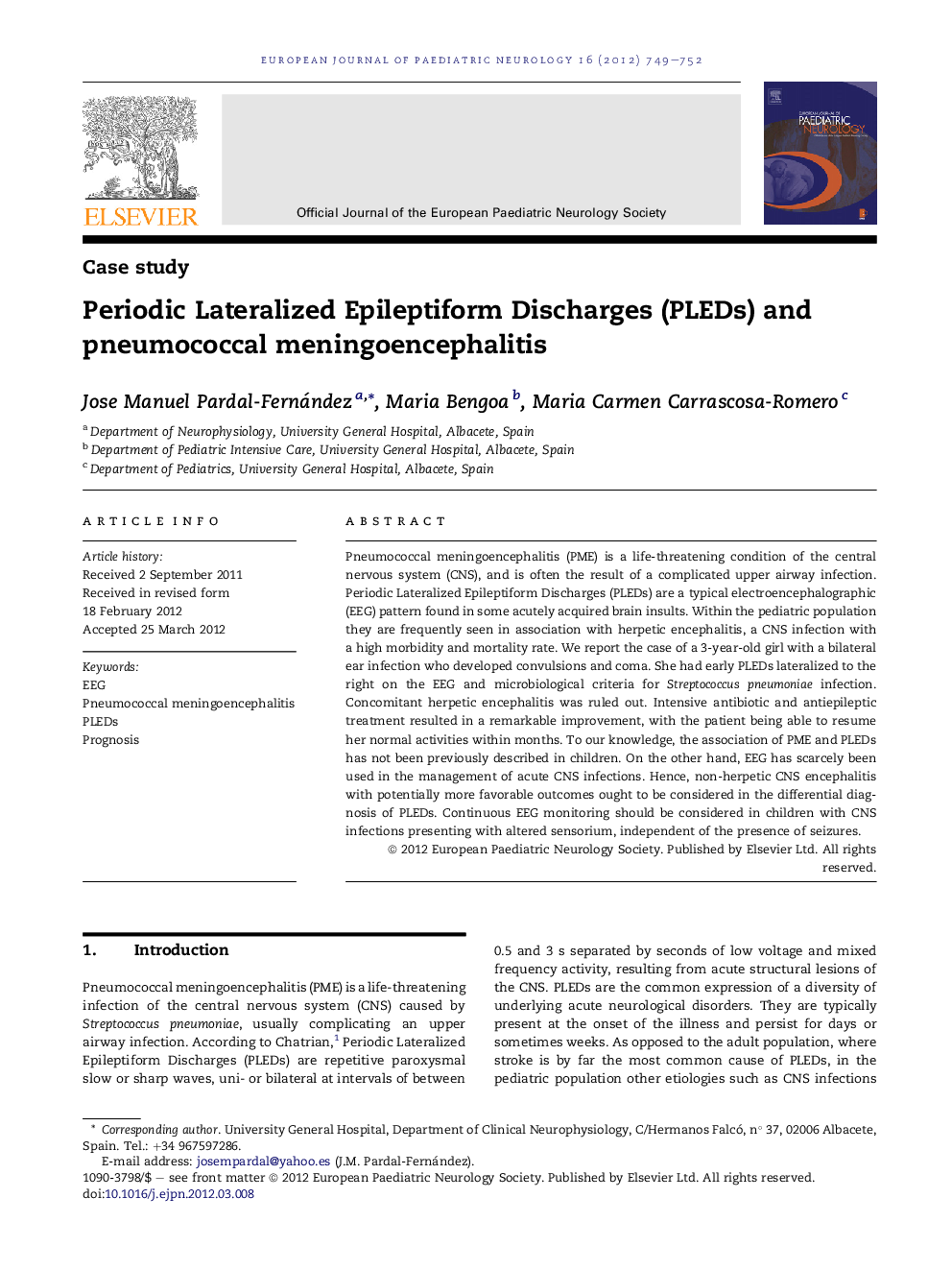| Article ID | Journal | Published Year | Pages | File Type |
|---|---|---|---|---|
| 3053920 | European Journal of Paediatric Neurology | 2012 | 4 Pages |
Pneumococcal meningoencephalitis (PME) is a life-threatening condition of the central nervous system (CNS), and is often the result of a complicated upper airway infection. Periodic Lateralized Epileptiform Discharges (PLEDs) are a typical electroencephalographic (EEG) pattern found in some acutely acquired brain insults. Within the pediatric population they are frequently seen in association with herpetic encephalitis, a CNS infection with a high morbidity and mortality rate. We report the case of a 3-year-old girl with a bilateral ear infection who developed convulsions and coma. She had early PLEDs lateralized to the right on the EEG and microbiological criteria for Streptococcus pneumoniae infection. Concomitant herpetic encephalitis was ruled out. Intensive antibiotic and antiepileptic treatment resulted in a remarkable improvement, with the patient being able to resume her normal activities within months. To our knowledge, the association of PME and PLEDs has not been previously described in children. On the other hand, EEG has scarcely been used in the management of acute CNS infections. Hence, non-herpetic CNS encephalitis with potentially more favorable outcomes ought to be considered in the differential diagnosis of PLEDs. Continuous EEG monitoring should be considered in children with CNS infections presenting with altered sensorium, independent of the presence of seizures.
